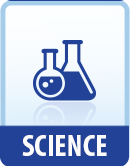|
This section contains 1,718 words (approx. 6 pages at 300 words per page) |

|
Overview
Development during the early eighteenth century of practical thermometers with stable temperature scales by Daniel Fahrenheit (1686-1736), Anders Celsius (1701-1744), and others made possible reproducible, intercomparable temperature measurements. This had immediate practical applications in many branches of science as well as catalyzing work on the nature of heat and temperature and leading to the formulation of the concepts of specific and latent heat. Further efforts to refine these scales eventually led to the development of an absolute temperature scale.
Background
Devices that merely indicate changes of temperature—known as thermoscopes—have existed since antiquity. Such devices are not thermometers since they provide no means of identifying specific temperatures or quantifying temperature changes. This requires a temperature scale. Galileo Galilei (1564-1642) is generally credited with constructing the first thermometer (1592), although Cornelius Drebbel (1572-1633) may have preceded him. Regardless, Santorio Santorre...
|
This section contains 1,718 words (approx. 6 pages at 300 words per page) |

|


